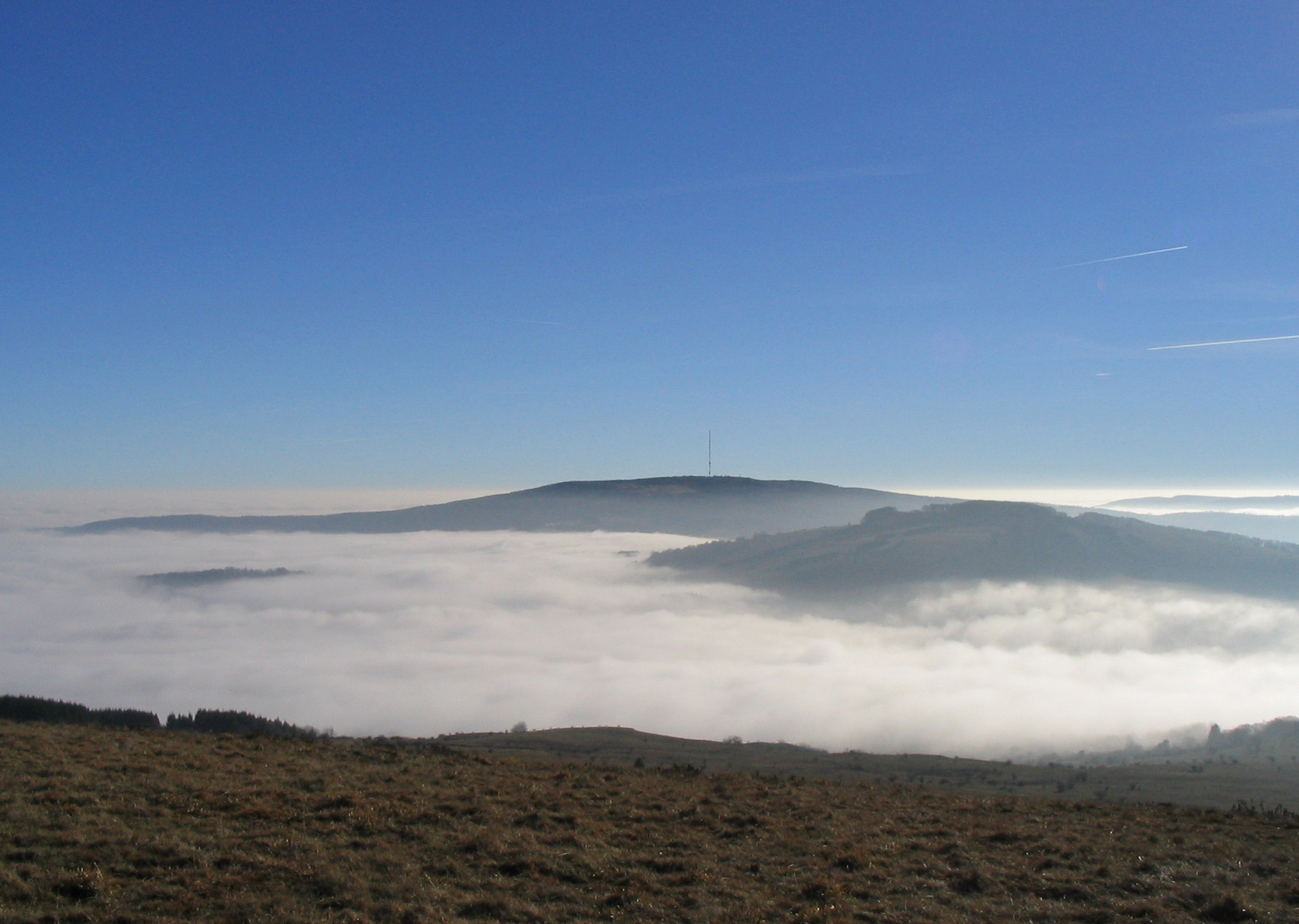Capping Inversion on:
[Wikipedia]
[Google]
[Amazon]
 A capping inversion is an elevated inversion layer that caps a convective
A capping inversion is an elevated inversion layer that caps a convective
Capping Inversion
- AMS Glossary of Meteorology
Capping Inversion
- National Science Digital Library Boundary layer meteorology Atmospheric thermodynamics {{Climate-stub fr:Couche d'inversion#Inhibition de la convection
planetary boundary layer
In meteorology, the planetary boundary layer (PBL), also known as the atmospheric boundary layer (ABL) or peplosphere, is the lowest part of the atmosphere and its behaviour is directly influenced by its contact with a planetary surface. On Ea ...
.
The boundary layer is the part of the atmosphere which is closest to the ground. Normally, the sun heats the ground, which in turn heats the air just above it. Thermal
A thermal column (or thermal) is a rising mass of buoyant air, a convective current in the atmosphere, that transfers heat energy vertically. Thermals are created by the uneven heating of Earth's surface from solar radiation, and are an example ...
s form when this warm air rises into the cold air (warm air is less dense
Density (volumetric mass density or specific mass) is the substance's mass per unit of volume. The symbol most often used for density is ''ρ'' (the lower case Greek letter rho), although the Latin letter ''D'' can also be used. Mathematically ...
than cold air), a process called convection
Convection is single or multiphase fluid flow that occurs spontaneously due to the combined effects of material property heterogeneity and body forces on a fluid, most commonly density and gravity (see buoyancy). When the cause of the c ...
. A convective layer such as this has the potential for cloud formation, since condensation
Condensation is the change of the state of matter from the gas phase into the liquid phase, and is the reverse of vaporization. The word most often refers to the water cycle. It can also be defined as the change in the state of water vapor ...
occurs as the warm air rises and cools.
An inversion occurs when the normal temperature (warm air below, cold air above) profile is reversed, creating a stable configuration of dense, cold air sitting below lighter, warm air. An elevated inversion layer is thus a region of warm air above a region of cold air, but higher in the atmosphere (generally not touching the surface).
A capping inversion occurs when there is a boundary layer with a normal temperature profile (warm air rising into cooler air) and the layer above that is an inversion layer (cooler air below warm air). Cloud formation from the lower layer is "capped" by the inversion layer. If the capping inversion layer or "cap" is too strong (too close to the surface), it will prevent thunderstorms from developing. A strong cap can result in foggy conditions.
However, if the air at the surface is unstable enough, strong updrafts can be forced through the capping inversion. This selective process of only allowing the strongest updrafts to form thunderstorm
A thunderstorm, also known as an electrical storm or a lightning storm, is a storm characterized by the presence of lightning and its acoustic effect on the Earth's atmosphere, known as thunder. Relatively weak thunderstorms are somet ...
s often results in outbreaks of severe weather
Severe weather is any dangerous meteorological phenomenon with the potential to cause damage, serious social disruption, or loss of human life. Types of severe weather phenomena vary, depending on the latitude, altitude, topography, and atmos ...
. The role of capping inversions in bolstering the intensity of severe weather was realized in conceptual models that were developed by atmospheric science researchers in the late 1960s and had been recognized as a characteristic of tornado-producing airmasses as early as 1954.
See also
*Convective available potential energy
In meteorology, convective available potential energy (commonly abbreviated as CAPE), is the integrated amount of work that the upward (positive) buoyancy force would perform on a given mass of air (called an air parcel) if it rose vertically thr ...
*Convective inhibition
Convective inhibition (CIN or CINH) is a numerical measure in meteorology that indicates the amount of energy that will prevent an air parcel from rising from the surface to the level of free convection.
CIN is the amount of energy required to ov ...
External links
Capping Inversion
- AMS Glossary of Meteorology
Capping Inversion
- National Science Digital Library Boundary layer meteorology Atmospheric thermodynamics {{Climate-stub fr:Couche d'inversion#Inhibition de la convection